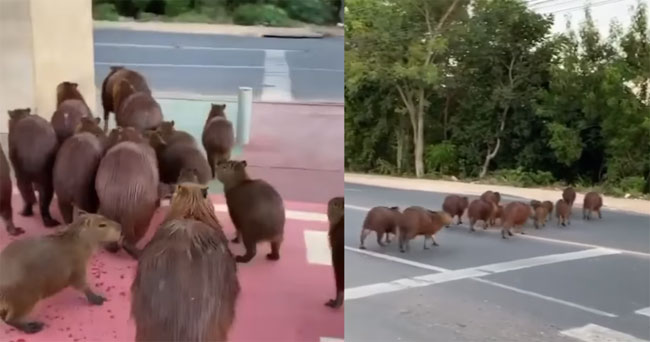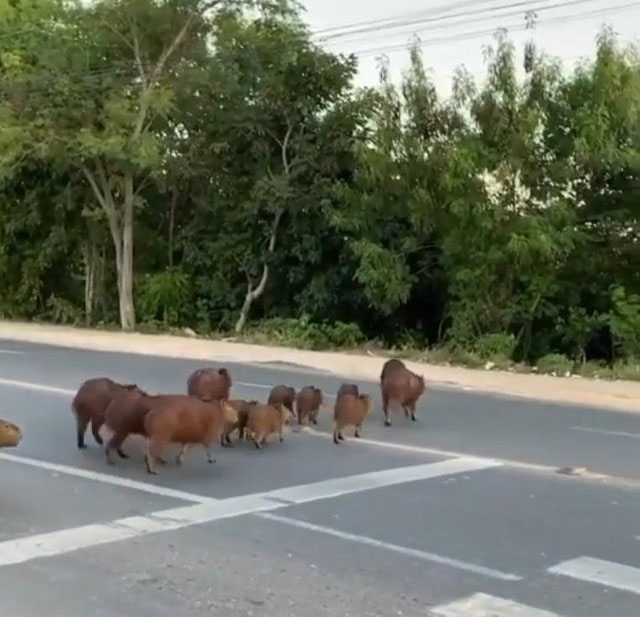Though they are both rodents, the capybara is vastly different from its dirty, nasty relatives.
Each of us carries a fear. Some fear heights, some fear holes, some fear snakes… and many share a common fear of rats.
According to psychologists, in the past, rodents and snakes could pose serious threats to human health, making the fear quite justified. Nowadays, with advancements in medicine, these animals are less likely to harm our health, yet the fear still lingers in the subconscious of many people.

Capybaras are rodents closely related to cute hamsters.
However, the largest rodent in the world, the capybara (Hydrochoerus hydrochaeris), is one of the most lovable animals on the planet due to its gentle and endearing nature.
Capybaras are closely related to the adorable hamster and, when fully grown, can reach about 60 cm in height, 1.2 m in length, and weigh around 45 kg. This species is native to South America and is considered a delicacy in countries like Venezuela, Brazil, and Colombia. Capybaras thrive in aquatic environments as they are semi-aquatic, much like beavers and otters.
They are primarily active during the early morning or at dusk, spending the rest of the day resting. These large animals are very gentle and are often kept as pets in various South American countries.
Interestingly, capybaras show no fear when playing with predators. They can comfortably frolic with fierce animals like crocodiles, dogs, cats, and monkeys.
Capybaras possess an innate talent for swimming. They have all the features necessary to become champions, with webbed feet and toes connected by skin, allowing them to move seamlessly on soft ground and underwater.
Not only are they excellent swimmers, but capybaras also have an interesting skill that not everyone knows about: the ability to cross the road, as seen in the clip below.
Clip source: José Francisco Salomé Figueira.
The clip was filmed by José Francisco Salomé Figueira in Cuiabá, Brazil, and was later shared on his personal Facebook page, garnering significant public attention.
In the video, a large group of capybaras, around 15 individuals of various ages, gathers by the roadside, preparing to cross.

The group of capybaras patiently waits for the last car to pass before crossing the road.
It’s unclear whether the capybaras were taught this behavior, but their actions appear very skilled and methodical. They patiently wait for the last car to pass before they begin to cross the road. Watching the clip reveals the organization and law-abiding nature of the capybara group.
The group divides into three lines, with the smaller capybaras in the middle and the larger ones on the outside, maintaining distance and formation while quickly following the leader across the road. The entire process is executed swiftly and neatly, resembling a well-trained military unit.


















































